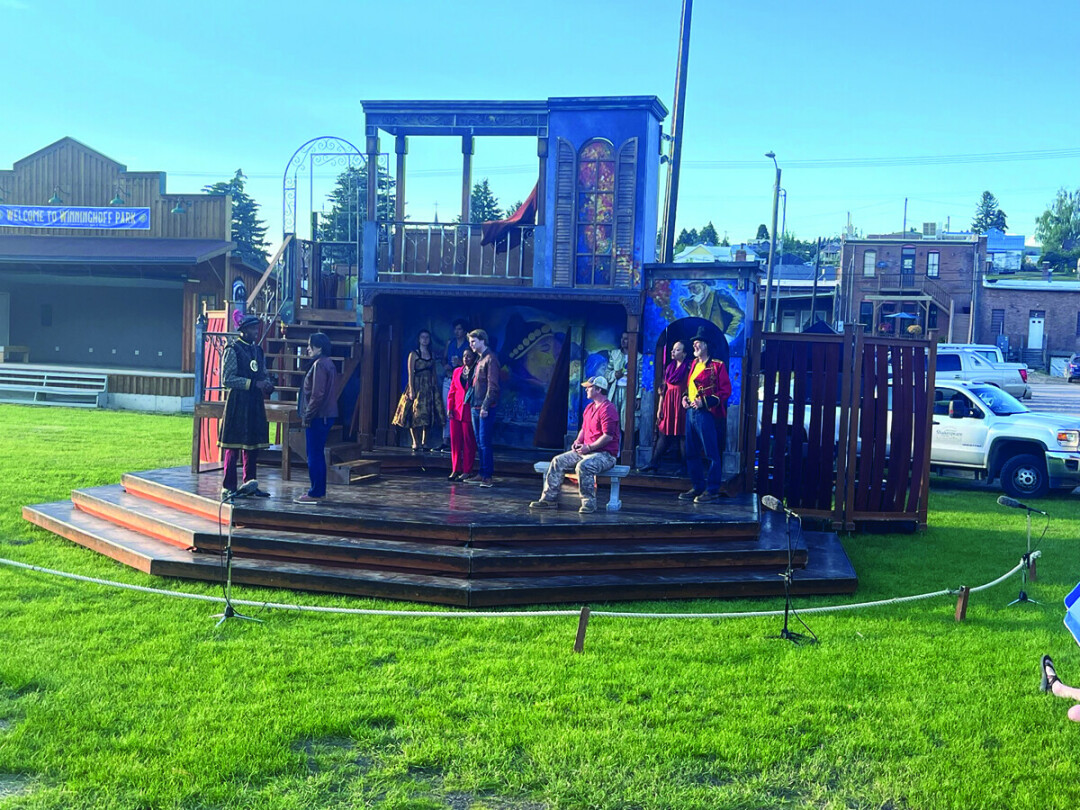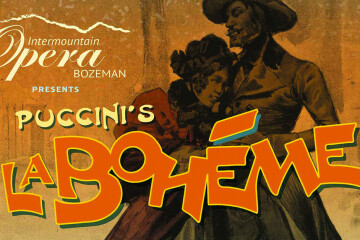Shakespeare in the Parks Summer Tour
Joel Jahnke, retired Artistic Director of Montana Shakespeare in the Parks (MSIP), likes to tell a story that happened to him in the early days of MSIP’s summer tour, a story that made him realize that MSIP was onto something big. It was 1980 and Jahnke, as the new Artistic Director of MSIP, was driving out to Poker Jim Butte to meet the actors. He arrived at Birney, a small town of 17 people on the Tongue River, a long drive on a gravel road in southeastern Montana. Poker Jim Butte was another 10 miles further on a side road, and there weren’t many signs pointing the way. As Jahnke drove up to Birney’s general store, he saw a couple kids off to the side sitting by a mailbox. Jahnke stopped and said “Hello there! What are you doing?” And they replied, “We are waiting for the Shakespeare,” as if they were waiting for a circus to come to town.
On June 24th, Montana Shakespeare in the Parks (MSIP) hits the road with their 52nd season of bringing Shakespeare to 64 towns and rural communities across Montana, Idaho, Washington, and Wyoming on their summer tour. Eleven actors drive a large Expedition vehicle and a pickup truck pulling a large trailer affectionately called “The Whale,” filled with their performance set. Over the length of the tour they drive around 6000 miles, crisscrossing these states, setting up their stage, performing their two-hour show, tearing down the set and repacking the Whale, only to drive several hours the next day to their next stop. They do this day after day, from June 24th in Big Timber to the end of the season on September 10th with their final performance back in Bozeman. They will perform Hamlet about 39 times and The Winter’s Tale another 39 times in 64 communities.
While there are eleven actors that take the tour on the road, there are about 75 people working behind the scenes to get the show on its feet. These include directors, stage managers, light and sound designers, costume designers, set designers, carpenters, seamstresses, dramaturgs, textual coaches, and more. Their work starts a couple months before the show is first performed, but once rehearsals are over, it is complete.
Once untethered from the rehearsal routine in Bozeman, the directors, designers, and technicians go home, and the actors are on their own for the next few months. The shows continue to evolve and change, as they must with live performances. It is well worth your while to travel to see these shows in one of the communities along the route. The changes that come to the shows throughout the tour are sometimes subtle, sometimes brave, sometimes amazing, but always, the shows remain fresh and unique to each community.
Given the huge geographical area the shows are performed in, one can only imagine the diversity of the audiences, the communities, and the circumstances under which performances occur: from the sweltering dry heat of the eastern plains to snowy stages in the mountainous west; from long twilight evenings at the beginning of summer to frosty evenings, as the shorter days of fall close in on us. Audience sizes range from twelve people up to fifteen hundred.
The actors often speak of how special every stop is, and the warmth of the people who serve as their hosts and eager audience members. Whether they are in Ekalaka in southeastern Montana, Salmon in eastern Idaho, Plains in northwestern Montana, or in Worland, Wyoming, the actors have fond memories of their audience members and performances.
Several places always stand out, however. Birney, Montana’s Poker Jim Butte is a perennial favorite, due in no small part to its remoteness and isolation from any signs of civilization. The site of an active fire-watch tower, the butte is one place where the actors camp out overnight, often sleeping on the stage where they can see the brilliant stars, completely unobstructed by any night lights. 
Seeley Lake is another place the actors frequently mention as a location where they love to have a day off from their schedule and can indulge in swimming, hiking, fishing, or simply enjoying a leisurely day in a beautiful location.
Silvergate, a tiny community at the northeast entrance to Yellowstone National Park, is another actors’ favorite. The simple, sheer beauty of the performance venue at this historical location is breathtaking. The historical significance of this area includes author Earnest Hemingway, who often spent parts of his summers in and around this town.
In the northwest corner of Montana is Palmer Park, just outside Charlo. Actors often wax nostalgic about playing in the magnificent grove of large weeping willow trees that stand sentinel around the park.
Another favorite stop is in Libby, in far northwestern Montana. Due to its proximity to the beautiful Yaak Valley and the Kootenai River (and its pedestrian suspension bridge), along with the generous and exciting hosting of a local guide named Weezel, the actors get to walk the swinging bridge high above the river, get tours of some of the locally-known sites, and hear stories of nature.
But every stop, every town, every location has its special charm and stories. Repeat actors on this tour look forward to their own ‘rolodex’ of local friends and favorites who become like family to them. Lifelong friendships often start out with a short conversation after a performance, followed by a “see you next year.”
So why should you go see an MSIP show on the road? After all, isn’t the play the same at each performance? Gretchen Minton offers a good answer for this question in her book, Shakespeare in Montana, where she quotes Susan Bennett: “This audience [the audiences who attend MSIP’s productions] not only defies an appropriately shaped knowledge of who goes to the theatre, and especially of who goes to see Shakespeare, but perhaps also enjoys a special expertise derived precisely from the intersection of the plays, the performers, and the place.” In other words, the place matters, the people who attend the plays matter, and this intersection leads to variation in each performance, as a reflection of the place, the people, the play, and the players. Each show will seem different in some way.
Visit the MSIP webpage to see their tour schedule; find a town or region that sounds intriguing to you, and make plans to go! It’s that simple. If you wish, feel free to contact the MSIP office and let them know you’re planning to attend that show; the actors will look for you and be happy to say hello to you. It’s a special thing for them to find people at their shows that connect them back to Bozeman. MSIP brings a great gift to this entire region, a thing that is called “community” — one big community in which the central tenet is MSIP’s productions of Shakespeare and other classical plays. And when you attend these plays, you are part of this community, regardless of where you are in Montana, Washington, Idaho, or Wyoming.
Here is the Montana Shakespeare in the Parks website, where you can find their tour schedule: https://shakespeareintheparks.org/. See you on the road!




